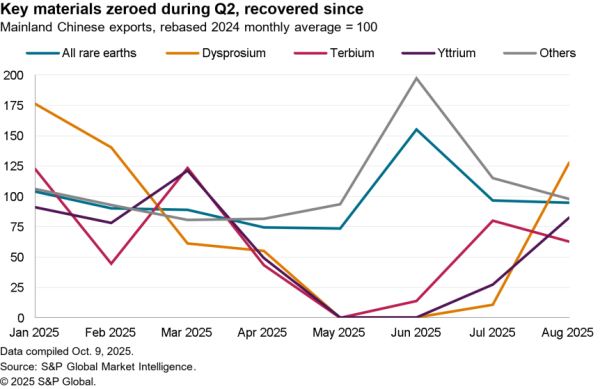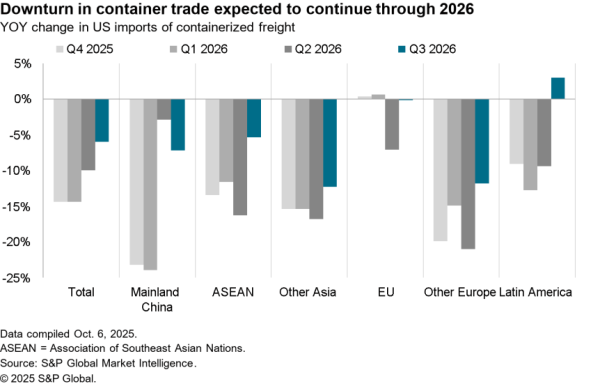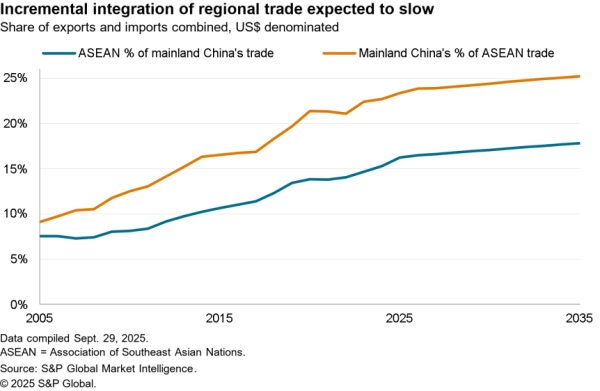The rapid expansion in U.S. retail sales continued in May, with total sales excluding autos and fuel having improved by 23.3% year over year and by 15.7% compared to May 2019, Panjiva’s analysis of official data shows.
The latter included a 38.9% rise in sports / leisure goods sales as consumers prepared for a summer of outdoor activities while a 27.9% rise in non-store sales versus 2019 confirms the shift to e-commerce rather than in store.
The only sector to post accelerating growth was clothing with stores reporting 14.4% growth in May 2021 versus May 2019 compared to a 9.8% increase in April. Not all store types have seen stellar growth with sales by electrical stores down by 0.4% in May 2021 versus May 2019.
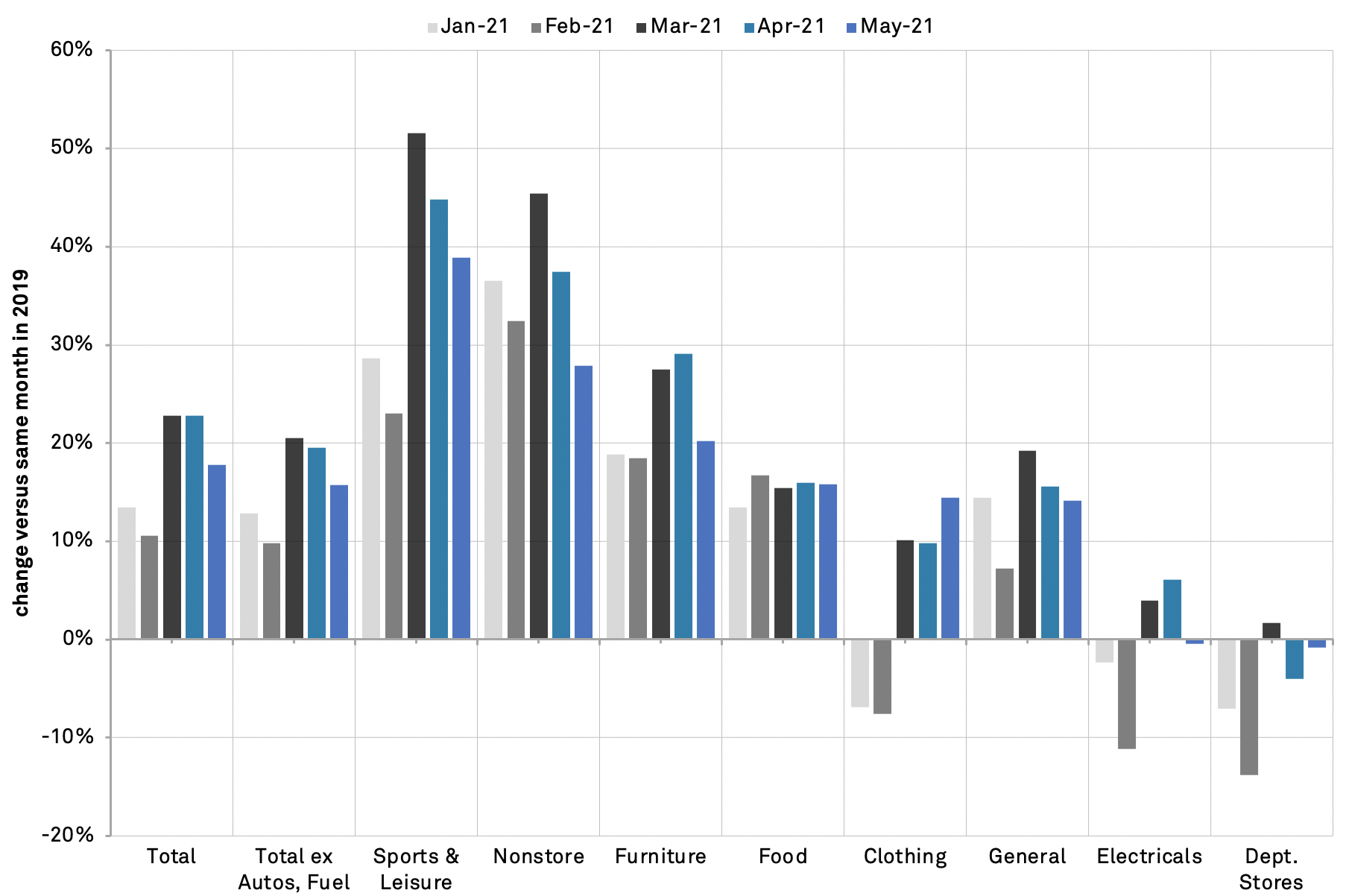
Source: Panjiva
Panjiva’s data shows that the continued, elevated consumer demand is drawing in significantly more seaborne imports with total consumer discretionary shipments up by 88.2% year over year and by 32.9% compared to 2019.
Home furnishings and household appliances led the way with growth of 62.2% and 52.2%respectively. Consumer electronics meanwhile expanded by 10.9% with lower electrical store demand likely being offset by non-store growth. Shortages may be emerging in clothing given imports only rose by 4.4% versus the double-digit growth in sales.

Source: Panjiva
While shipments are expanding in most product lines, the logistics situation remains highly complex. Retailers are facing continued port congestion both on the U.S. west coast and more recently at ports in the Shenzhen region, including Yantian as discussed in Panjiva’s research of June 14, which may disrupt shipments scheduled to arrive late in the summer. That’s led some firms including Home Depot to charter their own shipping capacity to reduce their reliance on others’ schedules, Container News reports.
While Home Depot currently restricts access to their shipping data, Panjiva’s data for earlier periods indicate key import lines for the firm include built-in furniture, appliances, tools, fastenings, lightning and sanitaryware.
Shipments of such home improvement products climbed 26.2% year over year in May and by 26.6% compared to May 2019. Timing matters with imports normally peaking in the July and August period, coinciding with Home Depot’s plans but also raising the risk of disruption from departures from China in the coming weeks.
Imports from Yantian, China where port challenges are centered accounted for 7.9% of shipments in the 12 months to May 31 with leading container lines on the route including MSC and Evergreen Marine with 21.9% and 10.1% of shipments respectively.
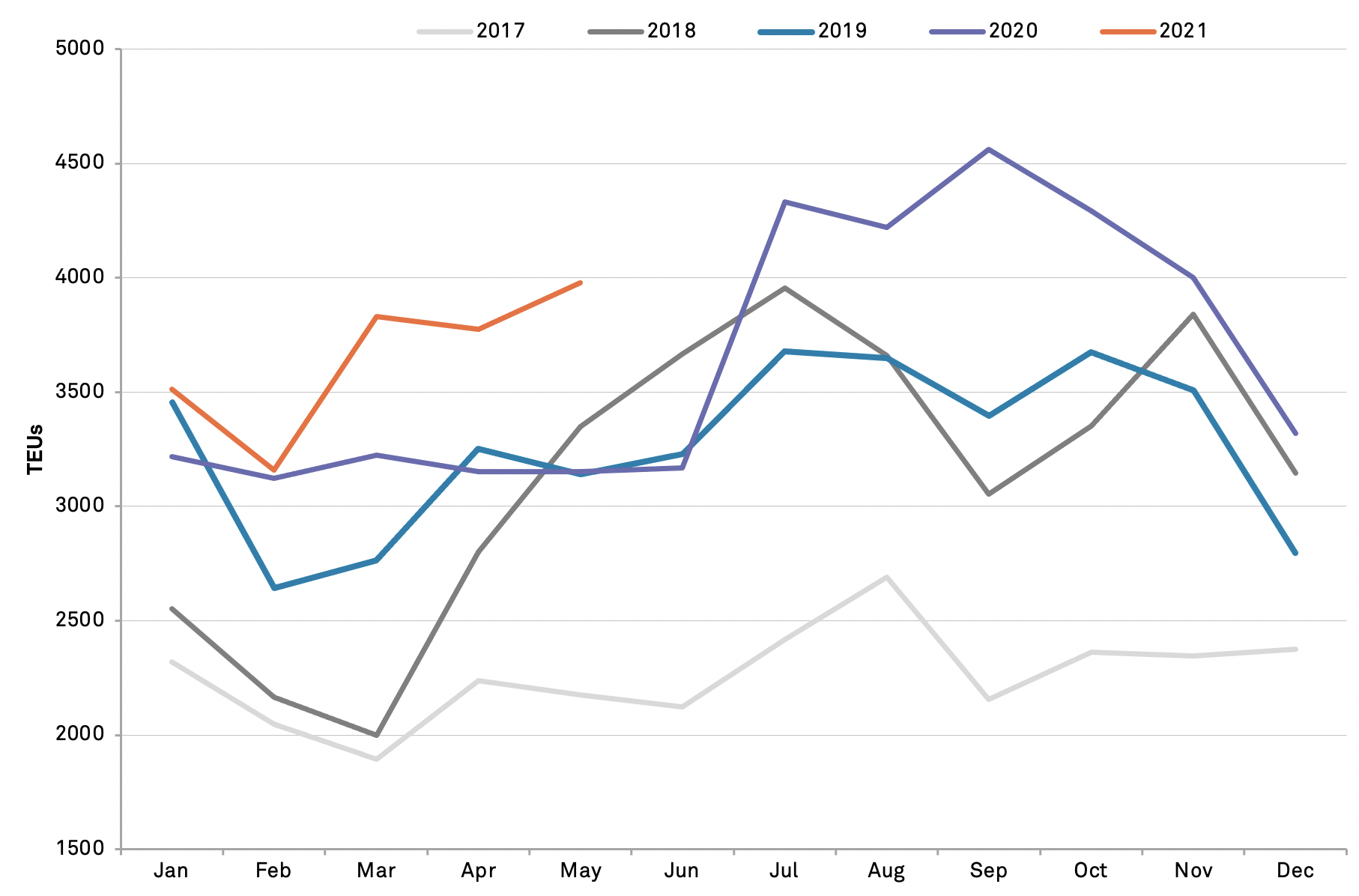
Source: Panjiva

